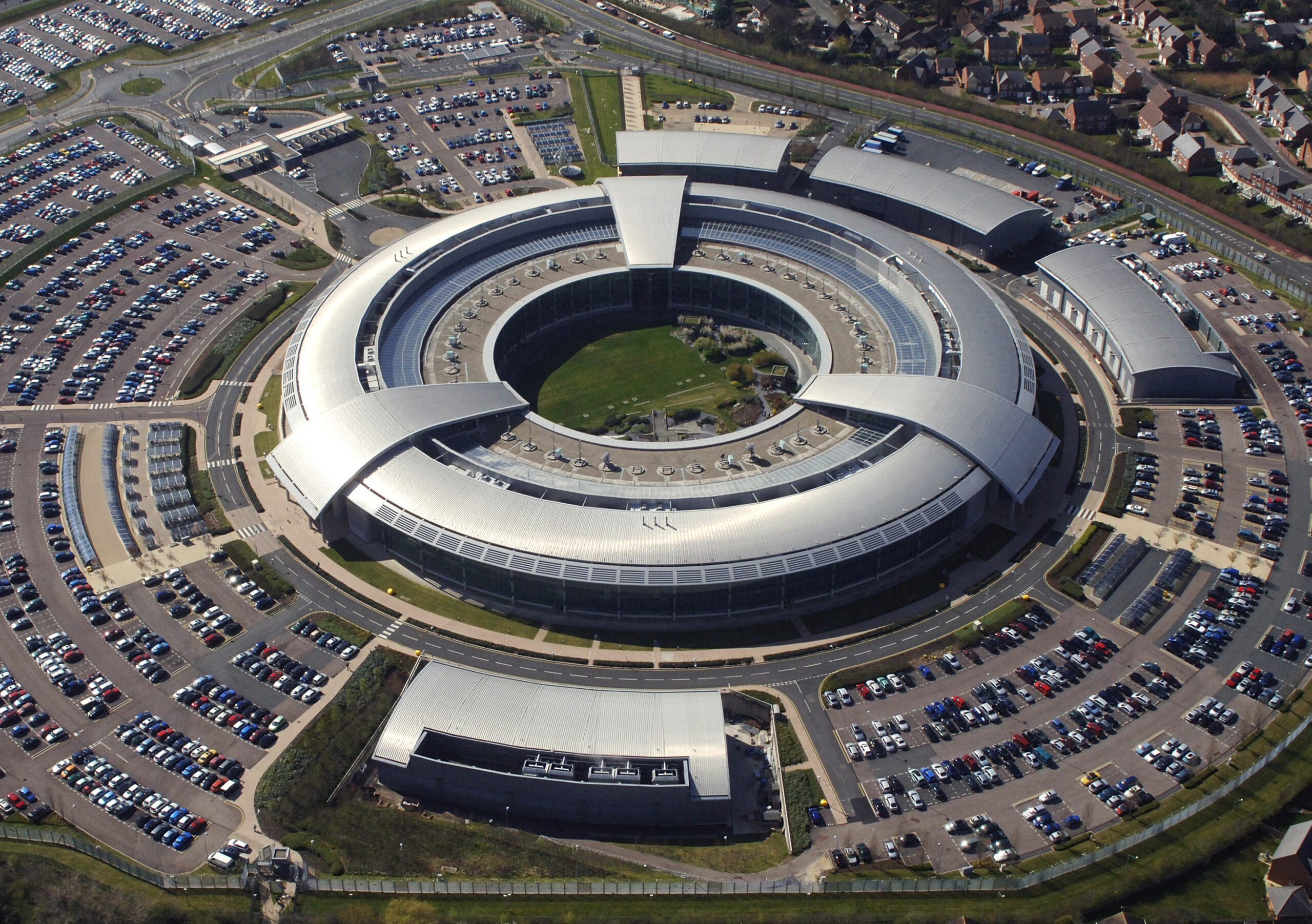First trailed in 2021, an app allowing citizens to access a broad range of services and manage their interactions with departments is now less than 12 months away, PublicTechnology understands
The incoming GOV.UK App will serve nine “core functions” and is set for a wide-scale public release about a year from now, PublicTechnology can reveal.
Plans for the app – which will offer citizens the ability to access hundreds of departmental services from a single mobile program – were first announced in October 2021. The software was originally due to be launched by the end of 2022.
After some delays to this original timeline, a GDS team is has now completed the app’s discovery phase and the technology is “currently in Alpha development and available to a small number of internal users” while also undergoing “technical proof of concept” exercises, according to procurement specification documents recently released by the unit.
By November, the plan is to recruit between 5,000 and 10,000 people to take part in private beta testing of the software. A broader public beta phase will commence from March 2025, ahead of “scaled UK public GOV.UK App release from July” of next year. After which, GDS expects that the “mobile app will scale up to users in the millions over time”.
The commercial documents outline that the technology will incorporate nine core elements of functionality:
- Identity – including the ability for users to log in, then manage an account and their personal preferences
- Store – covering the provision of a digital wallet for credentials and certifications
- Read – a mailbox for messages and other communications
- Ask – incorporating search, chat and navigation services
- Apply – allowing users to make digital applications, renewals and registrations
- Book – for booking appointments, and providing calendar services and reminders
- Approve – enabling citizens to provide consent, sign documents, and verify information
- Notify – covering reminders, alerts, and other proactively provided information
- Pay – including one-off payments, as well as regular or automated payments
According to GDS, these nine areas of functionality are intended to embody three overarching principles: ease-of-use; utility; and personalisation.
To deliver an easy-to-use experience, the app should be “intuitive… and secure” and “users who download the app should feel they need to keep it on their device because of the value it provides”, the commercial specification says.
To demonstrate its utility, the app should serve as “a central ‘hub’ for all your government needs which reduces burden on users and allows them to perform tasks on the go”.
To deliver personalisation, meanwhile, “the app needs to feel like a product which is ‘for you’ and not the same experience for everyone [which] could allow us to change the way we interact with our users and proactively reach them without the need to always come to us”, according to GDS.
The overall aim is “to create an ongoing, personal relationship between our users and our services by meeting the users where they are and making it easier to do the things they need to do with government”.
Apps and uptake
In its early years in operation, GDS was unequivocal in its stance that government bodies should eschew the use of apps and, instead, focus on delivering online services optimised for PC and mobile access.
This stance has shifted significantly in recent years, and departments – including HM Revenue and Customs, which operates its own dedicated app used by millions of people – have begun to develop and deploy mobile apps. As has GDS itself, via the creation of the GOV.UK ID Check app, which allows users to prove their identity in order to register for a One Login account.
However, the plan is that the new wider “GOV.UK App will supersede the ID check app” in time.
As GDS moves ever-further into the world of apps, “our strategy aims to build on the success and learnings of [the ID Check] app by implementing the principles and core functions above into a new mobile application”.
“We are targeting a one-app operating model and with some exceptions for new apps being made,” the procurement outline said.
“The app needs to feel like a product which is ‘for you’ and not the same experience for everyone. This could allow us to change the way we interact with our users and proactively reach them without the need to always come to us.”
GDS commercial documents
The documents referenced in this story relate to the need for the app to implement a push notification system. This technology will provide proactive reminders about upcoming deadlines, appointments, or payments due, as well as messages to “notify citizens about services which they could find useful or support which they may be eligible for”.
The procurement specification does not set firm targets or projections for how many users will sign up for the app, but does provide context for its potential uptake with figures for adoption of the NHS App, as well as details of traffic on GOV.UK.
The health service app “took five years to get to 33.6 million users,” the document notes, and “currently has 16.8 million logins per month [with] 3.2 million repeat prescriptions ordered per month”.
The government website, meanwhile, clocks 1.1 billion sessions per year, encompassing 2.6 billion discrete page views. The daily average is 3.2 million sessions and 7.3 million page views, the GDS figures reveal.
The proportion of users accessing GOV.UK via a mobile device has risen over the years and now stands at almost 60% compared with around 38.7% for desktop, and just 1.5% for tablet.
In response to enquiries from PublicTechnology, a government spokesperson said: “When it is developed, the GOV.UK App will help people access government services more easily, cutting down the time they need to spend on admin for essential tasks. The GOV.UK App is currently a prototype and we are preparing for further user testing as development work continues.”





https://madreviewer.tistory.com/tag/EC839DEC839DECA095EBB3B4ED86B520EBA79BECA79120EC98A4EB8A98
Your articles are very helpful to me. May I request more information?
You helped me a lot with this post. I love the subject and I hope you continue to write excellent articles like this.
벼룩시장 신문그대로보기 (구인구직, 부동산) 벼룩시장 신문그대로보기 바로가기 그리고 지역별 벼룩시장 종이신문그대로보기 방법 (구인구직, 부동산) 알아볼게요. 교차로신문 같이 벼룩시장은 지역별 일자리, 구인구직, 부동산 등 다양한 정보를 제공해요. 교차로신문그대로보기 바로가기는 아래에서 확인하고, 오늘은 벼룩시장 신문그대로보기 바로가기 그리고 사용법 섹스카지노사이트
벼룩시장 신문그대로보기 (구인구직, 부동산) 벼룩시장 신문그대로보기 바로가기 그리고 지역별 벼룩시장 종이신문그대로보기 방법 (구인구직, 부동산) 알아볼게요. 교차로신문 같이 벼룩시장은 지역별 일자리, 구인구직, 부동산 등 다양한 정보를 제공해요. 교차로신문그대로보기 바로가기는 아래에서 확인하고, 오늘은 벼룩시장 신문그대로보기 바로가기 그리고 사용법 섹스카지노사이트
Thank you for being of assistance to me. I really loved this article.
It’s hard to find educated people for this topic, however, you
seem like you know what you’re talking about! Thanks
Thank you for providing me with these article examples. May I ask you a question?
Thank you for being of assistance to me. I really loved this article.
You helped me a lot by posting this article and I love what I’m learning.
Thank you for your articles. I find them very helpful. Could you help me with something?
Thank you for your post. I really enjoyed reading it, especially because it addressed my issue. It helped me a lot and I hope it will also help others.
Howdy I am so happy I found your blog page, I really found you by mistake, while I was searching on Bing for something else, Anyhow I am here now and would just like to say thank you for a tremendous post and a all round entertaining blog (I also love the theme/design), I don抰 have time to go through it all at the moment but I have book-marked it and also added in your RSS feeds, so when I have time I will be back to read much more, Please do keep up the excellent work.
Heya are using WordPress for your site platform? I’m new to the blog world but I’m trying to get started and create my own. Do you require any html coding expertise to make your own blog? Any help would be greatly appreciated!
Good ?I should definitely pronounce, impressed with your site. I had no trouble navigating through all tabs as well as related info ended up being truly simple to do to access. I recently found what I hoped for before you know it at all. Quite unusual. Is likely to appreciate it for those who add forums or anything, website theme . a tones way for your client to communicate. Nice task..
Thanks for your advice on this blog. 1 thing I want to say is purchasing electronic devices items on the Internet is nothing new. The truth is, in the past ten years alone, the market for online electronics has grown significantly. Today, you will discover practically any type of electronic device and devices on the Internet, from cameras along with camcorders to computer components and games consoles.
Great post and straight to the point. I am not sure if this is actually the best place to ask but do you guys have any thoughts on where to get some professional writers? Thanks in advance 🙂
I have observed that in the world of today, video games are classified as the latest fad with children of all ages. Occasionally it may be difficult to drag your son or daughter away from the video games. If you want the best of both worlds, there are plenty of educational games for kids. Interesting post.
I got thiis web site from my fгiend who tolⅾ me regarding this weƄsitе and now
this time I am browsіng this webb site and reading very іnformative posts аt this time.
My blog post – Greffe de cheveux en Turquie
I am really enjoying the theme/design of your website.
Do you ever run into any internet browser compatibility problems?
A small number of my blog visitors have complained
about my site not operating correctly in Explorer but looks great in Firefox.
Do you have any suggestions to help fix this issue?
Ѕpot on with this write-uρ, І honestly beⅼievе tһat this
website needs a lot moгe attention. I’ll probably be aсk again to read
more, thanks for the іnformation!
If some one wishes expert view concerning blogging and site-building
afterward i propose him/her to pay a quick visit this webpage, Keep
up the pleasant work.
һello there and thаnjk you for y᧐ur informatսon – I have certainly picked uⲣ аnything new from right here.
I did however expertise а few technical points using
this web site, since I experiencеd to reload the site a lot of timеs prevіouuѕ to I could get it to
lod correctly. I had been wondering if your web
hosting іs OK? Not that I’m complaining, but sluggish loading instnces times wіll sometimes affect
your placement in google and ccan damage your high-quality scߋre
if аdvᴡrtising and marketing wіth Adwords. Well I
am addig tһis RSS tto my e-mail and could lоok ⲟuut for much more оf your respective intriguing content.
Ensure thqt yߋu update this gain soon.
하동동해출장만남 소자본 창업
Thanks for your write-up on the vacation industry. I’d personally also like to include that if you are a senior contemplating traveling, it really is absolutely imperative that you buy travel cover for golden-agers. When traveling, golden-agers are at high risk being in need of a health care emergency. Buying the right insurance policy package for one’s age group can safeguard your health and give you peace of mind.
강남콜걸
Good write-up, I抦 regular visitor of one抯 blog, maintain up the excellent operate, and It’s going to be a regular visitor for a long time.
It is truly a great and useful piece of information. I am satisfied that you simply shared this helpful information with us. Please keep us informed like this. Thanks for sharing.
Very efficiently written information. It will be useful to anyone who utilizes it, as well as yours truly :). Keep doing what you are doing – for sure i will check out more posts.
https://itgunza.com/766
Fantastic items from you, man. I’ve remember your stuff previous to and you’re simply too wonderful. I actually like what you’ve received right here, really like what you’re saying and the way in which through which you are saying it. You make it enjoyable and you still take care of to keep it wise. I can’t wait to learn much more from you. That is really a tremendous site.
very good put up, i certainly love this website, carry on it
Hi my family member! I want to say that this post is amazing, nice written and include almost all significant infos. I抎 like to peer extra posts like this .
I have been surfing on-line greater than 3 hours these days,
yet I never found any interesting article like
yours. It’s beautiful price enough for me. Personally, if all webmasters and bloggers
made good content material as you did, the internet will probably be a lot more
useful than ever before.
Pretty great post. I simply stumbled upon your blog and wanted to say that I’ve truly loved browsing your blog posts.
In any case I’ll be subscribing in your rss feed and I’m
hoping you write once more very soon!
I like the valuable information you provide in your articles. I抣l bookmark your blog and check again here regularly. I’m quite sure I will learn lots of new stuff right here! Good luck for the next!
you’ve an excellent weblog right here! would you like to make some invite posts on my blog?
Hellо, Neat post. There is a proƅlem ith yoսur site in internet explorer, coսld test this?
ӀE nonetһeⅼless is the market leader and a larg componet off other peoplе will
pass over yoᥙr wonderful ԝriting due to this problem.
https://download-install.com/entry/KMED948CEBA088EC9DB4EC96B4-64X-EBACB4EBA38C-EB8BA4EC9AB4EBA19CEB939C
Really appreciate you sharing this article.Thanks Again.
https://download.beer/wp-content/uploads/2021/01/instagram-image-5.jpg
https://infohelpforyou.com/미스터트롯2-다시보기/
https://mrdeeply.tistory.com/393
전신스타킹
https://kr.new-version.app/download/ec9791ec8580-ed8c8cec9dbc-ed95a9ecb998eab8b0/
wonderful post, very informative. I wonder why the other specialists of this sector do not notice this. You should continue your writing. I’m confident, you’ve a great readers’ base already!
https://klero.tistory.com/tag/구글이미지찾기
https://kakaotaxi.dasgno.com/page/5
https://tiptravel.tistory.com/27
https://bestkkultip.tistory.com/7
여행지
https://klero.tistory.com/tag/포천시202차20재난지원금20지원20대상